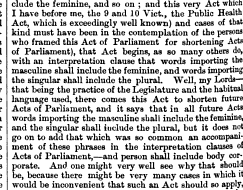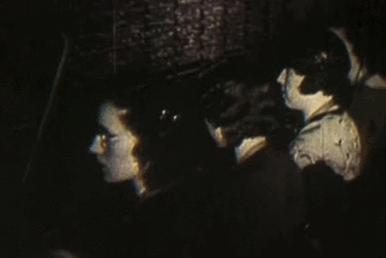Marc Abrahams's Blog, page 544
October 4, 2012
Atomic Berms *
 Devising marking systems (signs & etc.) which can be easily understood by anyone, anywhere, and in any language, is never going to be an easy task. Now imagine that on top of this, the systems have to remain intact and effective for the next 10,000 years. Specifically to discourage inadvertent intruders at a large-scale nuclear waste repository.
Devising marking systems (signs & etc.) which can be easily understood by anyone, anywhere, and in any language, is never going to be an easy task. Now imagine that on top of this, the systems have to remain intact and effective for the next 10,000 years. Specifically to discourage inadvertent intruders at a large-scale nuclear waste repository.
Just such a daunting task was evaluated by two teams co-ordinated by the US Sandia National Laboratories in 1992. They produced a 351-page report detailing their findings : Expert Judgment on Markers to Deter Inadvertent Human Intrusion into the Waste Isolation Pilot Plant (SAND92–1382 l UC–721)) (Caution: 20MB .pdf download).
One method, it was suggested, would be to use berms. The proposed berms would surround the Waste Isolation Pilot Plant (WIPP) 42 km east of Carlsbad, New Mexico.
“The berms serve several purposes. First, they define the area of interest. Their size is set so that sand dunes are unlikely to cover all of them entirely at the same time. Instead, the wind will leave dunes streaming behind the berms and create an even larger marker. Second, their shape sets the tone for the entire landscape — non-natural, ominous, and repulsive.”
As well as the ominous berms, the team(s) came up with another repulsive suggestion – in the form of the (copyright protected) image known as Mr. Yuk™. Neither did they overlook the potential of the Screaming Being (pictured above, from the report) as immortalised by artist Edvard Munch. But perhaps the most down-to-earth idea came from one of the especially invited advisors, the late Carl Sagan, from the Laboratory of Planetary Studies at Cornell, who came up with a suggestion for what might be the perfect symbol.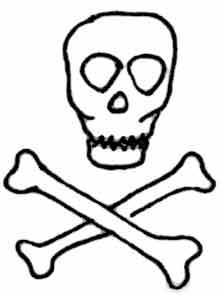
“ … we want a symbol that will be understandable not just to the most educated and scientifically literate members of the population, but to anyone who might come upon this repository. There is one such symbol. It is tried and true. It has been used transculturally for thousands of years, with unmistakable meaning. It is the symbol used on the lintels of cannibal dwellings, the flags of pirates, the insignia of SS divisions and motorcycle gangs, the labels of bottles of poisons – the skull and crossbones. Human skeletal anatomy, we can be reasonably sure, will not unrecognizably change in the next few tens of thousands of years.”
He was backed up too by programme manager Dr. D. Richard “Rip” Anderson :
“I think the only reason for not using the skull and crossbones is that we believe the current political cost of speaking plainly about deadly radioactive waste is worth more than the well-being of future generations.”
Coming Soon : One of the advisory team advises, to this day, on the symbolic implications of Pink Flamingos, High Heels, and Anti Gravity.
* Title devised with profuse apologies to Inspector Clouseau.

Herring farts at TEDxGöteborg 2012
News from the TEDx Göteborg 2012 ‘Beyond Borders’ website:
How can herring farts in the Stockholm archipelago almost lead to a diplomatic crisis? Or a bra be converted into a gas mask in case of emergency? To Magnus Wahlberg this is everyday stuff, and proof that science doesn’t have to be dull to be important. He is a biologist and Scandinavian desk chief of the science humor magazine Annals of Improbable Research, and has himself been awarded the Ig Nobel Prize (for those herring farts).
Magnus Wahlberg will tell his Ig Nobel story at TEDx Göteborg 2012, Sweden, on Wednesday October 10th, 2012, at Lorensbergsteatern (in Gothenburg). Try to be there! Apply here for a ticket.

October 3, 2012
Author, please: Words to contract by, singular and plural
An historical quest: Who is the true, original author of the pieces of this poetical sentence:
The singular shall where the context so admits include the plural and vice versa and the masculine shall include the feminine as shall be appropriate.
The sentence appears, with variations, in numerous contracts. Here are two examples:
 International Meat Trade Association:
International Meat Trade Association:
Words used in the singular shall, where the context so admits, include the plural, and vice-versa and words used in the masculine shall include the feminine.
Ham Farm (Dolton and Devon, UK):
Words in the is Agreement importing the singular shall, where the context so admits include the plural meaning and vice versa and words in this Agreement importing the masculine gender shall include the feminine and neuter genders and vice versa and words noting natural persons shall include corporations and vice versa.
The pieces go back at least to 1879, and likely before. Here’s an instance from 1879:

Most Bad Singers Aren’t Tone Deaf
Despite what you may have heard, acoustical analysis suggests that (1) most people are not horrible singers, and (2) most horrible singers are not tone deaf – they’re just horrible singers.
In 2007, Isabelle Peretz and Jean-François Giguère of the University of Montreal, and Simone Dalla Bella, of the University of Finance and Management in Warsaw, tested the abilities of 62 “nonmusicians” in Quebec who admitted to being “occasional singers”.
The very act of testing proved more difficult than Dalla Bella, Giguère and Peretz had heard it would be.
They published a report, in the Journal of the Acoustical Society of America, called Singing Proficiency in the General Population. They complain, to anyone who will listen, that it is not easy to measure the goodness or badness of singing….
So begins this week’s Improbable Research column in The Guardian.

October 2, 2012
Progress in Automatic Giraffe Recognition
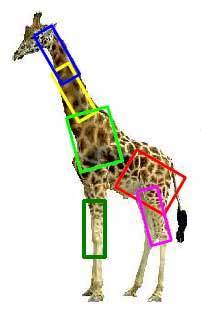 The Forsyth / Fleck ‘Human Nude Detector’ system attracted widespread media attention late last century – featuring, for example, in the pages of Wired magazine. (Paper for Reference: Forsyth, D.A. and Fleck, M. M., “Automatic Detection of Human Nudes,” International Journal of Computer Vision , 32 , 1, 63-77, August, 1999). Less well publicised though were the subsequent developments for naked mammal detection (also featuring the work of professor David Forsyth).
The Forsyth / Fleck ‘Human Nude Detector’ system attracted widespread media attention late last century – featuring, for example, in the pages of Wired magazine. (Paper for Reference: Forsyth, D.A. and Fleck, M. M., “Automatic Detection of Human Nudes,” International Journal of Computer Vision , 32 , 1, 63-77, August, 1999). Less well publicised though were the subsequent developments for naked mammal detection (also featuring the work of professor David Forsyth).
viz. The implementation a system which could not only detect unclothed tigers and zebras in photographs and videos, but also giraffes.
“Building a kinematic model for a giraffe is difficult (even given a collection of giraffe pictures with the background masked out) because a giraffe deforms non-rigidly. Our algorithm suggests a good kinematic model is one where the segments appear in a lot of giraffe pictures. This is why one should model the giraffe neck as three segments rather than one; some of the giraffe pictures have a deformed neck.”
Reference : Using Temporal Coherence to Build Models of Animals (Intl. Conf. on Computer Vision (ICCV), Nice, France, Oct 2003) Note: The illustration is from a 2005 follow-up paper :Ramanan, D., Forsyth, D. A., Barnard, K. “Detecting, Localizing, and Recovering Kinematics of Textured Animals.” Computer Vision and Pattern Recognition (CVPR), San Diego, CA, June 2005

October 1, 2012
New book: The Butt Crack of the Tick
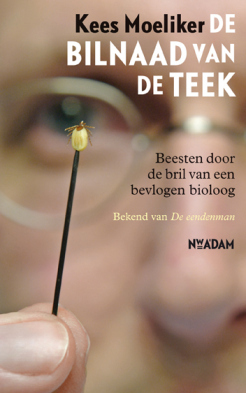 The duck guy has a new book — about the butt crack of the tick.
The duck guy has a new book — about the butt crack of the tick.
After witnessing ‘the first case of homosexual necrophilia in the mallard (duck)‘ and winning an Ig Nobel Prize for his publication documenting that remarkable behavior, Kees Moeliker developed a keen eye for animal oddities. He published most of his subsequent observations, findings and thought in his (bi)weekly column ‘Beest’ [beast] in the leading Dutch newspaper NRC Handelsblad.
This week marks the launch of his new book, De bilnaad van de teek [The butt crack of the tick], that bundles 115 columns.
In addition to a short, yet revealing look into tick anatomy (and new observations thereof), the book also presents Moelikerian classics such as ‘The strange case of the decapitated canary’ and the (first ever) mouse collected from the Dutch parliament. The parliamentary rodent now lives, in death, in the collection of the Natural History Museum Rotterdam, of which Kees Moeliker is the curator.
For now, the book exists only in the Dutch language. We shall all see whether and how and how soon The Butt Crack of the Tick translates into other languages.

Legal scholarship: crayons, a tree, and the self
From the Lowering the Bar blog’s collection of legal cases worth pondering, if not studying [that's our description, not necessarily Lowering the Bar's, though not necessarily not, either]:
Bradshaw v. Unity Marine Corp. (S.D. Tex. 2001) (“Both attorneys have obviously entered into a secret pact . . . to draft their pleadings entirely in crayon on the back sides of gravy-stained paper place mats, in the hope that the Court would be so charmed by their child-like efforts that their utter dearth of legal authorities in their briefing would go unnoticed.”).
Bruni v. Bruni (Ontario Super. Ct. 2010) (“Here, a husband and wife have been marinating in a mutual hatred so intense as to surely amount to a personality disorder requiring treatment . . . . I am prepared to certify a class action for the return of all wedding gifts.”)
Collins v. Henman (S.D. Ill. 1987) (dismissing case because, even accepting petitioner’s claim that he was the Prophet Muhammed, he was still required to exhaust remedies in state court before filing federal habeas action).
Denny v. Radar Industries (Mich. Ct. App. 1971) (“Appellant [tried to distinguish his case.] He didn’t. We couldn’t. Affirmed.”)
Fisher v. Lowe (Mich. Ct. App. 1983) (“We thought that we would never see/A suit to compensate a tree”). Bonus points: Westlaw did the summary and headnotes in verse, too.
Lodi v. Lodi (Cal. Ct. App. 1985) (“This case started when plaintiff Oreste Lodi sued himself in the Shasta County Superior Court.”).

September 30, 2012
Male Avatars’ Dances – How attractive?
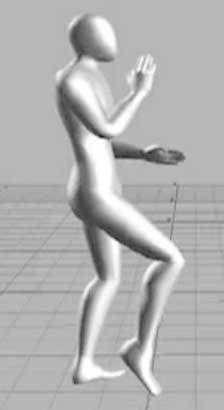 Does this ‘Male Avatar’ look attractive to you? What if he were to dance? Maybe you might form an opinion if you saw a video? In any event, you can participate in anonymous web-based research project now underway at the Universität Göttingen, in Germany, where Dr. Fink is a senior researcher. He heads the Evolutionary Psychology : Emmy Noether Research Group – which is running an on-line survey entitled: Attractiveness Perception of Men’s Dances.
Does this ‘Male Avatar’ look attractive to you? What if he were to dance? Maybe you might form an opinion if you saw a video? In any event, you can participate in anonymous web-based research project now underway at the Universität Göttingen, in Germany, where Dr. Fink is a senior researcher. He heads the Evolutionary Psychology : Emmy Noether Research Group – which is running an on-line survey entitled: Attractiveness Perception of Men’s Dances.
If you participate, you can rate the attractiveness of the male avatar as he struts his stuff in various dance-videos.
Note: To take part, you must first sign the Informed Consent Form – but participating is, theoretically, almost entirely risk-free.
“There are no risks for involvement in this study, as none of the characters exists in reality in the form shown. Although we do not expect any harm to come upon any participant due to electronic malfunction of the computer, it is possible though extremely rare and uncommon.”
Further reading:
Dr. Fink’s lab has also undertaken studies which investigated :
• Male dance moves that catch a woman’s eye
• Digit ratio & numerical competence and
• Facial symmetry in young girls and boys from a slum and a control area of Ankara, Turkey
Other research projects here:

September 29, 2012
Switchboard operators and their pranks
This old video documentary by AT&T tells the early history of the telephone switchboard, and includes bits of colorful tale-telling, including some about the naughty behavior of some switchboard operators. Much of the documentary, though, is reassuringly, seriously dull:

September 28, 2012
Boar Taint Update and Invitation
“High quality pork requires control of unpleasant aromas,” says Pfizer, a company that goes on to offer their opinion about “Why unpleasant aromas occur“:
As male pigs approach puberty, they begin developing two naturally occurring compounds that can cause an unpleasant aroma in cooked pork. This off odor is technically referred to as “boar taint.” These natural off odors create no food safety issue, but need to be controlled to protect the quality experience of eating pork. The two compounds are androstenone and skatole.
Now the European Commission makes you a boar taint invitation:
Invitation to tender SANCO/2012/11593 concerning a study on how to achieve reduction of boar taint compounds by breeding, feeding and management techniques…. If you are interested in this contract, you should submit a tender in triplicate in one of the official languages of the European Union
(Thanks to investigator Dan Heck for bringing the European Commission invitation to our attention.)
BONUS: Mousy off flavor

Marc Abrahams's Blog
- Marc Abrahams's profile
- 14 followers








